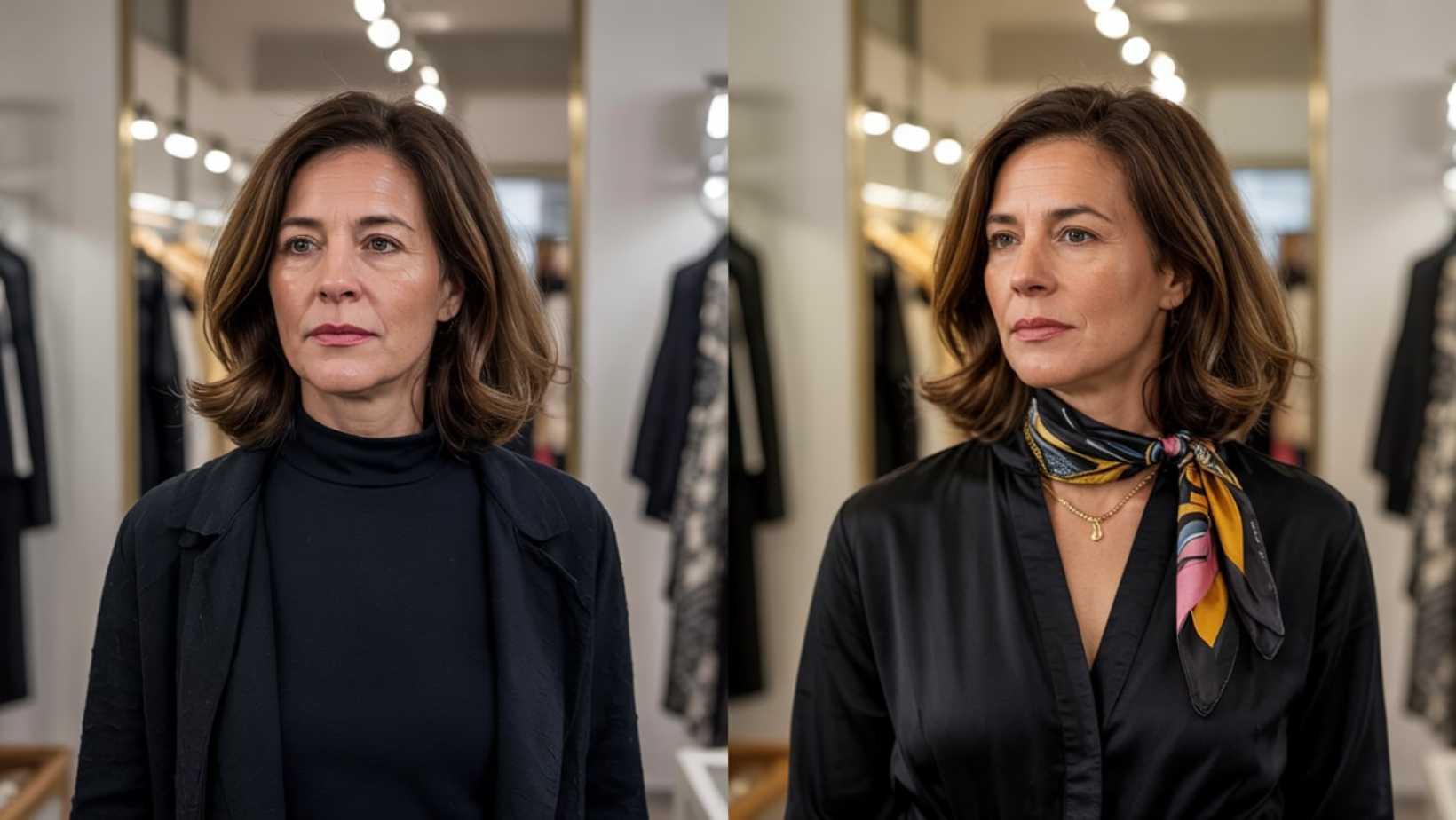Black is the bedrock of my wardrobe. For decades, I’ve relied on it as my go-to color for everything from business meetings to casual outings. It’s slimming, sophisticated, and supposedly timeless. But when I turned 57, I noticed something unsettling in my mirror reflection – my trusted black pieces weren’t doing me any favors. The color I had long depended on was actually draining my complexion, deepening shadows, and highlighting signs of aging I’d rather not emphasize.
After consulting with a color specialist, I discovered that as our skin matures, our relationship with black needs to evolve too. What worked in our 30s and 40s often needs adjustment as we approach our 60s. Through trial and error, I identified three critical mistakes I was making with black clothing – and more importantly, how to correct them while keeping my beloved dark pieces in rotation.
The Face-Framing Faux Pas: Black Without Boundaries
My first mistake was wearing solid black tops and dresses without any buffer between the dark fabric and my face. Black absorbs light rather than reflecting it onto your skin, which creates a shadow effect that can highlight fine lines and bring attention to under-eye circles. This stark contrast was particularly unflattering as my skin tone had naturally lost some of its vibrancy with age.
The solution was surprisingly simple: creating a boundary between black and my face. Adding a colorful scarf, statement necklace, or even a collared shirt underneath a black sweater made an immediate difference. These buffers reflect light upward, immediately brightening my complexion. Even a pearl necklace or metallic jewelry creates enough reflection to counteract black’s draining effect, similar to how strategic color choices near the face can take years off your appearance.
Texture Troubles: The Matte Black Trap
My second mistake was limiting myself to flat, matte black fabrics. These ultra-absorptive materials create a light-sucking effect that’s particularly aging. I had an entire collection of simple matte black tops that were essentially creating black holes around my upper body, making my skin appear dull by comparison.
I discovered that black with dimension and texture reflects more light and appears less harsh against mature skin. Switching to black with slight sheen, subtle patterns, or interesting textures made an enormous difference. Black satin blouses, velvet blazers, and jacquard-patterned black dresses still provide the sleek silhouette I love but with a softness that complements rather than contrasts my skin. This approach works similarly to how changing jean styles can dramatically alter your overall appearance.
Fabric Failures: When Black Materials Backfire
My third mistake was choosing black fabrics that highlighted rather than concealed texture issues in my skin. Certain materials – particularly very shiny synthetics and stiff cottons – create harsh shadows and can emphasize crepey skin or uneven texture. I had a black polyester blouse that somehow managed to make both my neck and arms look significantly older than they actually were.
The game-changer was becoming selective about black fabric qualities. Soft, draping fabrics like silk blends, fine merino wool, and high-quality jersey move with the body and create more flattering shadows. For structured pieces like blazers, slightly textured materials provide dimension that’s more forgiving than flat surfaces. I’ve learned that quality matters more with black than with any other color in my wardrobe, much like how certain colors can age you if not chosen carefully.
Strategic Black: Location Matters Most
The most effective strategy I’ve adopted is being intentional about where black appears in my outfits. Black pants, skirts, and shoes remain incredibly flattering and slimming. The key is creating distance between black garments and my face. A colorful top with black pants creates a balanced silhouette without the draining effect of all-black ensembles.
When I do wear black tops, I’ve learned to open necklines (V-necks and scoop necks are most flattering), add brightening accessories, and ensure the material has either movement or subtle luster. Even makeup adjustments help – a slightly brighter lipstick or illuminating foundation balances the light-absorption of black garments.
